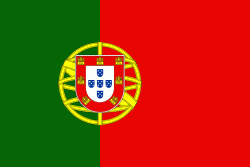Olhão Municipality (Olhão)
 |
 |
Since pre-history, Olhão has had vestiges of human occupation, although the oldest written record dates only from 1378, referring to a place called Olham. The estuary and abundance of water were decisive factors that influenced fishermen, at the beginning of the 17th century, to congregate along the beach of Olhão. The settlement developed even as officials in Faro discouraged concentration along this coast. Yet, after the middle of the 17th century, growth was driven by the protection offered by the Fort of São Lourenço do Bugio, which guarded the coast and entrance to the estuary, discouraging attacks from corsairs.
The incremental growth of the fishery along the coast and sea, and commercial enterprises associated their growth, provoked a leap in population. As a result, in 1695, the residents requested from the Bishop of Faro, that Olhão should be de-annexed from the parish of Quelfes: resulting in the formation of the parish of Nossa Senhora do Rosário de Olhão.
During the French occupation of the Algarve, during the Peninsular Wars, Olhão was notable for one of the few public uprisings against the occupiers, occurring on 16 June 1808. This revolt culminated in the expulsion of the French from Olhão and, as a result, from the rest of the Algarve. It was during this period, that a month later, a small group of 17 men embarked to Brazil, a Portuguese territory in South America where the king was living due to the French invasion, on a caique (a small sailing vessel) named Bom Sucesso, in the hope of promoting the Algarvean success to the Portuguese Court. The crew brought an ex-official statement describing the audacious attitude of the Olhanese revolt. A replica of the boat is moored at Olhão's waterfront.
In recompense, a regal charter (with the force of law) was signed by the Prince Regent John to distinguish Olhão, and its inhabitants, transforming the location from a locality to town, and ordering that it be referred to as Vila de Olhão da Restauração. The transformation, resulted in the creation of a new municipality, with local autonomy, beginning in 1826. In this year, the municipal council hall was erected and a juiz de fora was instituted to preside over the councilmen.
In 1835, the parish of Moncarapacho began to function as a suburb of Olhão, and in the following year, the municipal council took control of the parishes of Olhão, Quelfes, Pechão and part of Moncarapacho.
A judicial division of Portugal in 1874, resulted in the definitive demarcation of the municipality of Olhão, constituted by the five parishes of Olhão, Moncarapacho, Quelfes, Pechão and Fuseta.
Over time the small town of fishermen grew into an economic, social and urban centre, resulting in its elevation in city in 1985. In recent years, it has also developed a growing tourist industry.
Map - Olhão Municipality (Olhão)
Map
Country - Portugal
 |
 |
| Flag of Portugal | |
One of the oldest countries in Europe, its territory has been continuously settled, invaded and fought over since prehistoric times. The territory was first inhabited by pre-Roman and Celtic peoples who had contact with Phoenicians, ancient Greeks and Carthaginians. It was later ruled by the Romans, followed by the invasions of Germanic peoples and the Islamic invasion by the Moors, whose rule was eventually expelled during the Reconquista. Founded first as a county of the Kingdom of León in 868, gained its independence as the Kingdom of Portugal with the Treaty of Zamora in 1143.
Currency / Language
| ISO | Currency | Symbol | Significant figures |
|---|---|---|---|
| EUR | Euro | € | 2 |
| ISO | Language |
|---|---|
| PT | Portuguese language |

















